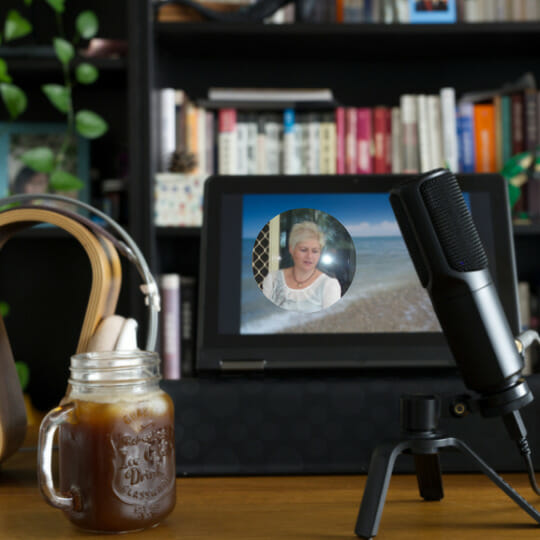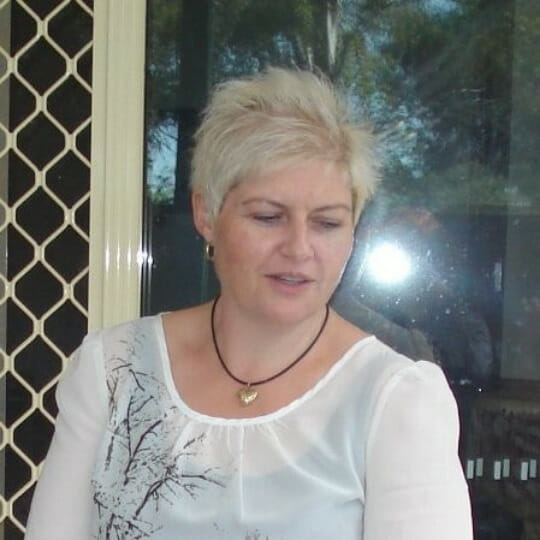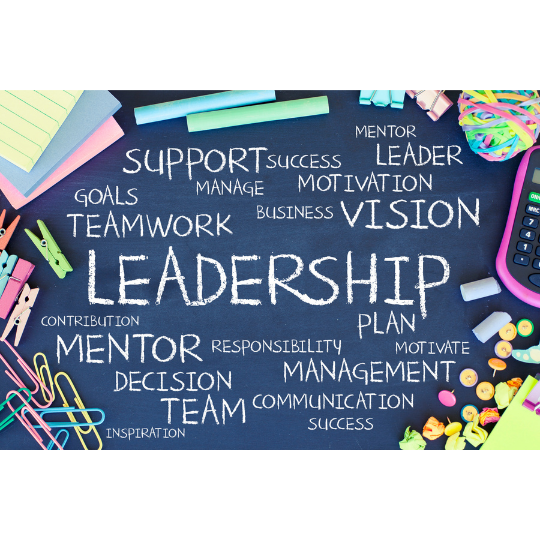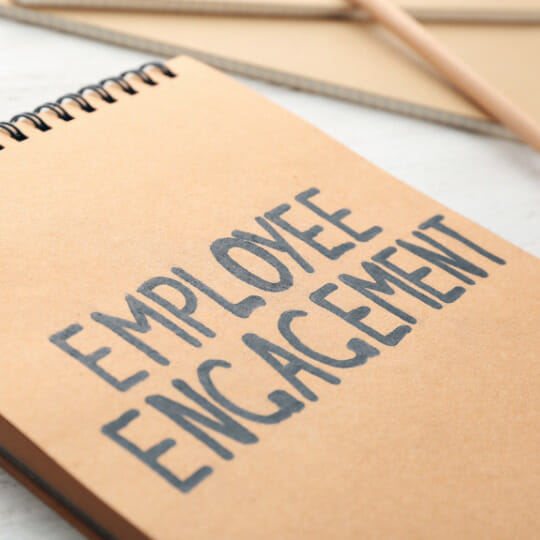
MW: Today, I’m very excited to be talking to Michelle Hassani today and Michelle, I’m not going to introduce you. I’m going to let you introduce yourself and tell us all about your business and what it is that you do.
MH: Thanks, Mel. Well, I’m Michelle Hasani and my business is Revive and Thrive. It’s about workplace wellness, leadership and lifestyle coaching. And I’ve been in business for about three years now. So my background is in leadership policy.
I work a lot for not-for-profits, in government organizations, which is where those services will come into play. For me, starting out in business, I had been in leadership for a long time and realized that I didn’t actually love what I was doing anymore, and I guess the flow had gone out of it.
I had an aging father who was ill and I had a young daughter at the same time so it was just a combination of things and reflecting and thinking I’m not loving what I do anymore. And there must be a better way of doing life. So following that I went and worked for the government for a little while. And for about five years and did some really interesting pieces of work.
During that time I started thinking about where I wanted to be long-term and coaching was the bit in the equation that I loved doing as a leader and as a manager. But I didn’t really get the opportunity to do it because there were so many other parameters that were influencing my time and then having had a cancer experience within the mix of that, I recognised that prevention was an important piece.
Our health system, while fragmented, was awesome at providing treatment but not awesome at helping a person, really make behaviour change or reclaim their health and wellness post-intervention of some really heavy-duty chemoradiotherapy, lots of surgeries, that kind of thing. So, often our system leaves people broken rather than cured.

So that’s kind of where I started thinking, what did I want to be doing? I wanted to help people with prevention which is far better than cure.
MW: You’ve talked about the gaps in healthcare, and it’s an interesting thing, people often say what’s the value of coaching, and when you think about somebody having been through such a significant journey and then being on their own in between visits to their doctor or their specialist or whatever. It’s a lot to deal with. It’s not just like you broke an ankle. It’s a it’s a life-changing experience, right? And you have to maybe rethink and re-navigate your life going forward and who’s going to help you with that?
MH: That’s where I started in terms of thinking it was one of the areas that I actually wanted to be working with people, helping them navigate the multiple practitioners that are in your world. When you have something like cancer, you’ve got multiple practitioners who aren’t necessarily talking to each other. And so that in itself presents a whole heap of other challenges in the equation.
It’s about helping people to develop a really clear plan about what their priorities are, and how can they rebuild following that trauma of the experience.
MW: So fast, forwarding three years now who’s your typical client? Who are you working within your business?
MH: It’s predominantly women though I have started to get some male referrals. My model is about working with a whole organization, but I have to say that that hasn’t transpired as I thought it might. It’s still a work in progress. But my main clients are coming from government employees, who are actually being seen to be underperforming or having significant health issues that are preventing them from performing, or perceived health-related issues that are impacting their ability to perform at work. That’s one cohort.
There is another who has been underperforming but they’ve been long-term employees so their employers want to invest in them, rather than the ‘three strikes or you’re out’ approach. They’re looking at what else they can be doing to actually help these people reach their maximum potential. It’s quite a proactive approach. It’s actually still very experimental.
For me, this work has extended to two government departments and I’m talking to a third, so it’s slowly developing. But we’re looking at how we can look at that as an ongoing model rather than it just being
I have other clients who have had breast cancer and want to invest in not going back there again. So rebuilding post-treatment and and going from there.
I have a few clients who are women who run their own businesses. They work as professionals and recognize that their health and well-being have been compromised because they’re putting others first rather than themselves. Some of those want to progress in terms of being at a particular level in their career but that would like to go to the next step but they know that going to that next step requires them to have a foundation really solid in terms of their self-care as well as their skill set.
Because of my background, I’m able to help them build the toolkit around leadership, as well as their toolkit around their health and well-being.
MW: That’s interesting. You’re working with those three groups and I think I can hear some similarities between them.
MH: Yeah, there are similarities. So performance is there, people working at their optimum, whether it’s their day-to-day management of their family versus how they perform within their workplace, or whether it’s about that performance in terms of the next step career-wise and building on from where they are now.
Some of the tools that I use with people are the same regardless of whether they’re underperforming at work, or they want to progress to the next level. The foundation for each of them is very similar, the same because one size doesn’t fit all, but it is quite similar.
MW: Interesting. We are kind of dancing around the topic of niches, but it’s almost like you’re looking at above and below the line of performance – with some coming up to that line and then some wanting to exceed.

MH: Yeah. Sometimes people don’t even know what their baseline is, you know. So that’s helping them to know where they are at right now, where they want to be and how they are going to get there, which is the whole coaching Journey.
And when I think about a whole organization and when I go in and work with them, it’s about helping them to understand whether they have systems and structures that support people.
Not being an effective leader is actually holding them back so I talk about wellness systems but it’s as simple as their communication. It’s not just about the health. It’s about the mindset and values that organizations use and then how that plays out in terms of enabling and supporting people to actually be self-driven within context.
MW: That’s interesting to think about the types of organizations that you’re working with. Are they generally that are more proactive and have a bit of a framework and some policies in place? Or are they people that don’t give that level of attention to their workforce, and almost need to be educated and directed a bit in that area?
MH: It’s kind of interesting in the government, because the state government is such a large beast, then there are policies and procedures, but what happens in practice is different depending on who’s leading individual teams. There’s not a streamlined consistent approach, so that’s where the work is.
With some of the smaller organizations that I’ve been working with, might have some things in place. One in particular that I’m thinking of has done some fantastic work in terms of documentation, but it’s then the implementation and anything leaders need to model what they’re doing. So you can have it on paper, but if you don’t have people that are walking the talk so then it isn’t congruent.
Often there’s a lack of congruence with the environments and so it’s about helping them to recognize that this may be the aspiration, but you’re not quite there yet.
MW: I was thinking this morning that a corporate culture starts with the individual and every individual has an impact on that. There’s definitely that role for leadership but it’s also, “How do you help the individual to take responsibility for their own health and well-being in a place?”
MH: Yeah I talk to organizations about that in my model, it starts with self, then it starts with the shared systems within an environment then it’s about enabling and equipping the leadership. Whether you’re a leader or you’re not, it all starts with being self-aware and building your own toolkit.
Then as you build your leadership within that, you’ve got your shared systems, shared language and shared values.
What that does is it frees up your teams to actually be self-managed. They have the confidence to be able to experiment as we do in coaching and explore different ways of doing things and it brings freedom in environments because, you know, everyone’s on the same page and consequently creates thriving cultures. It’s like, you’re closing the gap between the leadership in the workforce, almost bringing them onto the same page and getting them talking, the same language and working together, rather than that distrust or that they don’t understand me.
I think what I see more is that often smaller businesses are fantastic at taking care of their people but they forget to actually take care of themselves right? You know so you can have the policies and practice you can actually really give your staff days off. You can fund them to go and have fun. You know, you have a gym program for them, all of those things, but when it comes to, you know, a couple of organizations, I think their stress levels are really high because they’re actually spreading themselves too thin. So some of the work I also do is around helping to identify what the gaps are. So one organization are recently worked with was identifying the right level of support that is needed for their growing business as well. By then being able to help them develop what that looks like.

We don’t have to do it all ourselves. It’s sometimes knowing when’s the point same as in your coaching business, when’s the point of when you get help from others and pay someone to do a component of your work versus
MW: I’m curious to know your focus on business for the next 12 months. So if there were one or two things that you think are your priorities, what would they be?
MH: I’m having some interesting conversations with some peak bodies at the moment about how they can provide adequate support.
A lot of services are delivered by not-for-profits and some organizations might have an employee assistance program but it’s about helping people change their behaviors on going around their health and wellness. You can have a debriefing service, for example, a lot of not-for-profits work in environments where vicarious trauma is actually an issue.
But there are a whole heap of things that you can put in your toolkit to reduce your stress, manage your health and wellness, be more open around those conversations, those kinds of things. There is a space for coaching to actually support education engagement.
The other is around, consolidating, some of the government work and and trying to move it from ad hoc referrals to actually looking at a system response.
For example, you can get a free physio appointment or something like that, but you could also have a health check or health and wellness check. How might we be able to add a service in place that’s been so that the employers are getting maximum benefit?
MW: Yes, really packaging what you’re doing and taking that out into companies.
MW: I was talking to someone the other day and it’s all about timing. In September last year, I had a conversation with a person. He’s a head of a peak body and they were worried about getting support and decided to go a different way which is absolutely fine. Then only a week ago, I picked up the phone and said, hey, I’m just touching base to see how you’re doing and is there anything I can support you with?’ And that person said hey your timing is perfect. We need to have this conversation. So, you know, sometimes you as a coach who’s running a business, you don’t see the immediate effectiveness of those conversations that you are having.
It’s about planting the seed and then making sure that you go back and water it.
MW: It’s such an important point because a lot of people say, “How do I get a steady flow of clients?” and the answer is, “You have a steady flow of conversations.”
MH: Absolutely, you know, lots of people will go the social media way and you have to really know who the client is. The clients that I’m working with are of the age and professional status and are not going to pick up a service from an ad on Facebook or Instagram, you know. So they might check it out in terms of the quality of your content. Yeah. But they’re not going to click a link and book there.
MW: That’s a very important point. Coaching is a relationship business and you’re in the you what you are doing is building relationships in both the service that you deliver and the marketing of it and it’s like building friendships. I remember moving to a town where I knew nobody, but I didn’t get on the internet and started posting and hoping to make friends and business connections. I went out and talked to people and kept showing up and kept showing up and kept showing up and eventually, they figured out who I was and got to know me. It’s that repetition of showing up and adding value to them, sharing articles, asking how they’re going, following up and it’s also about making those strategic connections.
MH: This year, I’ve done a couple of workshops for a local government, but also for the tourism industry Tourism Commission of South Australia.
Now I can’t say that immediate work has come from either of those but the relationships that I made in one Workshop, eighty percent of the people in there were in the health provision space, but they’re all relationships, you know, from that we’ve talked about setting up a meeting on an ongoing basis to come together and look at how we can actually collaborate to provide support to clients. So that becomes a referral pathway rather than a thing that you sign up a client there and then. So that’s ongoing and it’s about building that relationship again with the tourism commission. That’s about keeping in contact with the people who attended, you value-add by giving something and not expecting anything back but what might come is that referral.
MW: It’s called the principle of reciprocity. Give first in order to receive as Stephen Covey, would say, absolutely yeah.
MW: So, I don’t go and deliver a workshop with the intent that I’m going to walk away with three clients from it.
I have the intent of hoping that people walk away with an aha moment that they can, then start to make improvements within their business, or within their own personal life. And then to know that if they need additional support it’s a phone call away and that starts a conversation.
MW: And I guess the other thing too, is that when you go to go to any sort of event or you run an event, there are going to be people who your values are aligned with. As in “values-aligned” as a hyphenated word. That’s a bit of jargony for a podcast, but it just means that you might make a couple of connections in that session that you then take offline and can, continue and build that more intimate relationship as well.
MH: There are some people who I know of who run workshops and sign clients before they’ve left the room and I don’t know how authentic that is. What I mean is, that I personally like to process the information. And so, you know, gathering information and testing and then saying “Is that what I want to be doing? Is that who I want to be working with?”
And maybe my clients’ stream comes slower because that’s the approach I take, but I’m actually quite comfortable with that because the people that come on board are genuinely committed to going through the process and then become long-term clients rather than it being you’ve done this short intervention and thanks very much.
MW: So, just to wrap up, Michelle knowing what, you know, now of all that you’ve done and experienced. If you could go back in time, what advice would you give yourself five years ago or three years ago?
MH: If I just go back three years I think the thing that I would have done is I probably would have stayed working part time. I need to be in collaboration and working with people in that context. So I think what I would have done is maybe stayed employed by someone for a period of time until I had the flow of clients because it takes time, it takes a good two years not just in coaching just generally. It takes time to build a solid client base to build those relationships.
Also, I’d say trust yourself in lots of different stuff. I originally was encouraged by multiple people to have a niche and one niche, you know, like an I think that slowed my business progress rather than looking at my whole skill set and tool kit. So, you know, like I was going mainly in that cancer space to start with, but in actual fact, our culture in Australia around paying for support in that space people get so much free stuff and there’s so much fundraising, and those kind of things, people expect to be given. I don’t agree with that but that’s okay. So I think, yeah, I think take the advice of others but then really trust your sense of where you think you need to go.
And I think the other thing, a great piece of advice that I and I was given is, don’t build it unless you’ve sold it. One of the things I did in the beginning was start writing programs, and having them ready to go, but if you actually haven’t sold it, there’s no point building it now.
MW: Right, you just need enough of a skeleton to have the confidence to go out there and promote yourself and say I’ve got this, but it’s not the complete whiz-bang finished product.
MH: Yeah. Because you can spend a lot of time that’s not paid for so, you know, like, be really clear. I guess the advice is, to be really clear on what is income-producing activity. And what’s not? Because at the end of the day, as much as, you know, we all become coaches because we want to help and support people who grow the stuff that you can do sitting at your desk like designing your website, doing your social media, all of those kinds of things isn’t actually income-producing activity so it’s about having it’s been clear on what is your income activity and what’s not and so have the best structure.
You don’t need it to be perfect and, you know, as we would talk to our clients about progress, not perfection, I think in terms of our business that’s the same piece of advice. I would have given myself. It’s progress, not Perfection. Yeah. So and no, you don’t have to spend a lot to get your business off the ground but there are just some key Basics that you need a good logo, a good business card.
MW: And you can do that electronically, you don’t even have to have a paper form, you know if you’ve got a fantastic LinkedIn profile. You don’t need a website until you you’re really clear about who you want to work with and you’ve done some work, it’s good to have a starting point, but then when you don’t know in the beginning.
It’s like when I was three, I didn’t know that I was going to University and to become a biologist 20 years later, you know? So it’s that same kind of thing. You might pick a direction and keep it rubbery and also not too much in place so that you can develop it through your experience of working with people and figuring out what you love to do.
Thanks so much. Michelle for your insights today and I hope that everything goes as you wish it to this year and the coming 12 months.
MH: One thing I’ve learned Mel is that it’s just being open to what the possibilities might be – to have a direction but then be grateful for the new opportunities that are presented. If you’re not open to them, you can’t actually know what they are. The space that you’re going to work in may not even be designed yet. So the space that we’re working in as health and wellness, coaches may not even be defined yet be open to listening to what people need and adapting.
MW: It’s very valid and the first bit you said is the important bit – listening to what people need.
Understanding who you are and what you need will allow your business to thrive! If you’re truly ready to break old habits and get out of the rut I encourage you to check out the Habitology membership.
Learn more here: